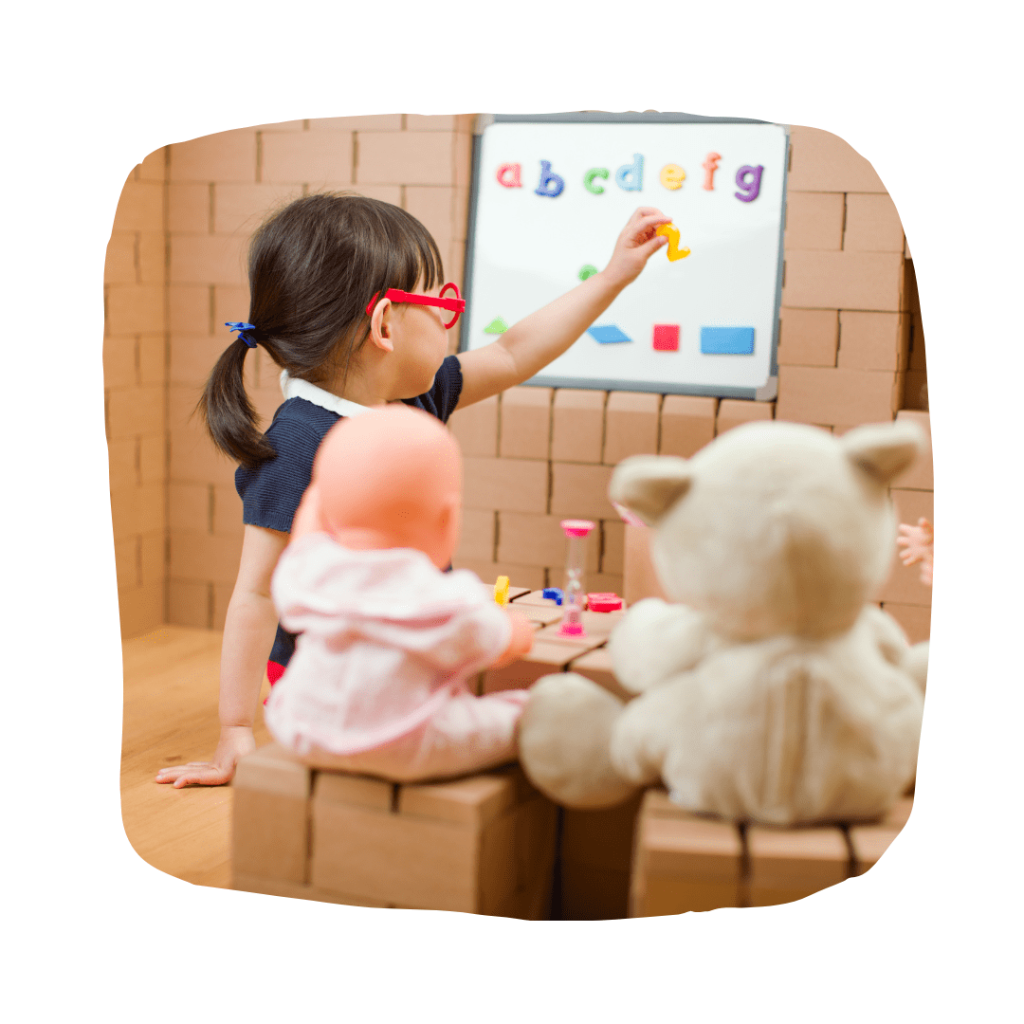Pretend play, sometimes known as imaginative or make-believe play, is an integral part of child development. It is the process whereby children engage in role play, acting out scenarios, creating stories, and attributing roles and functions to objects beyond their actual properties. A closer look at the stages of pretend play gives us a deeper understanding of its evolution as the child grows and develops. It also sheds light on how modern elements, such as digital media and technology, influence this process.

The Stages of Play and their timelines:
- Enactive Naming
The first stage, enactive naming, typically emerges around 12 to 18 months. In this phase, children begin to link actions with objects – for instance, a child may make a phone call gesture using a block. While the object doesn’t resemble a phone, the child recognizes its symbolic potential through the action or function it represents.
- Autosymbolic Schemes
Autosymbolic schemes stage appears around 18 to 24 months. Here, children start using themselves as symbols in their pretend play. For example, a child may mime sleeping, eating, or driving a car. This stage is crucial in child development as it signifies the child’s ability to understand symbols and enact roles.
- Decentred Symbolic Schemes
Around two to three years of age, children enter the decentred symbolic schemes stage. Here, they start assigning roles to their toys or other objects, like pretending a teddy bear is a baby that needs to be fed or that a banana is a phone. This shows the child’s growing understanding of the world and the roles within it.
- Sequencing Pretend Acts
Sequencing pretend acts, typically developing around three to four years of age, sees children beginning to link pretend actions into sequences, creating more complex narratives. Instead of just feeding a teddy bear, they may now put the bear to sleep after its meal, imitating real-life sequences. This stage demonstrates the child’s understanding of causality and sequence of events.
- Planned Pretend
By four to five years, children enter the planned pretend stage, where they can develop elaborate scenarios with multiple characters, each with unique roles. Children can plan ahead for their play, creating intricate stories and narratives. This stage signifies advanced cognitive skills, including problem-solving, planning, and organizing.
Impact of Technology, Screens, and Digital Media on Child Development and Play:
Digital technology and media have dramatically transformed the landscape of children’s play and learning in the 21st century. On the one hand, technology offers new platforms for exploration, creativity, and learning. Virtual games can stimulate problem-solving skills and strategic thinking. Learning apps can promote academic skills in a fun, engaging way.
However, the digital shift also presents challenges. High screen time can limit opportunities for active, hands-on play, negatively affecting physical health. Digital games may also inhibit imaginative play, as pre-set rules and narratives can limit the child’s creativity and autonomy in shaping their play. The loss of face-to-face social interaction, essential in developing empathy and social skills, is another concern with the increased use of digital play mediums.
What Matters:
While digital media and technology offer valuable tools for learning and entertainment, they should complement, not replace, traditional forms of play. Striking a balance is key – combining the benefits of technology with the irreplaceable value of physical, social, and imaginative play that’s fundamental to child development.


Pretend play serves as a cornerstone of child development, fostering cognitive growth, creativity, empathy, and social skills. As we navigate the digital age, it’s important to remember that while technology provides valuable learning tools, it should never eclipse the vital role of imaginative, hands-on play. Balancing the digital and the physical realms of play can help ensure holistic development for our children, equipping them with a broad range of skills for the future.

